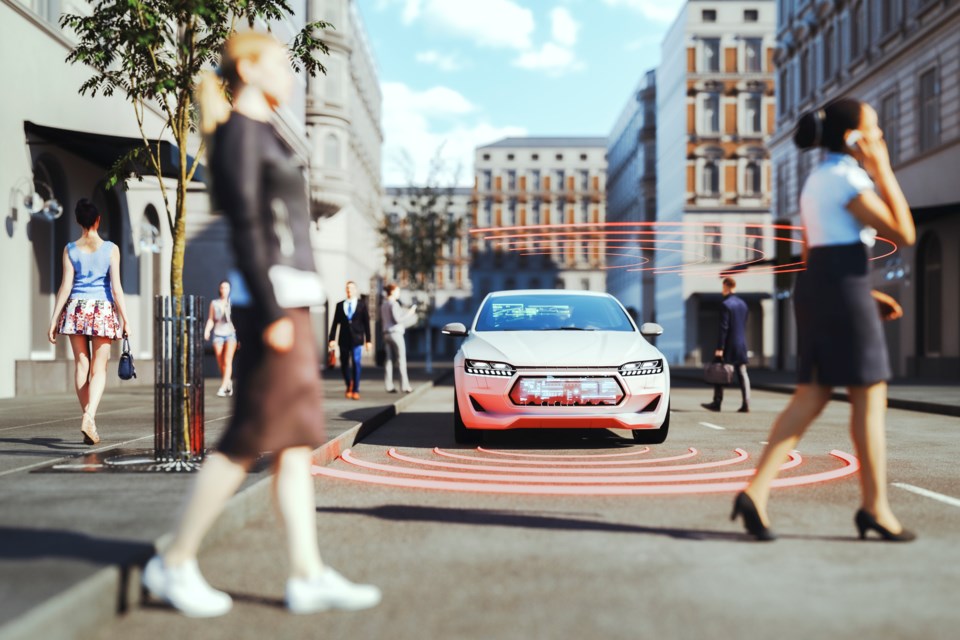Just imagine: it's a regular day, you take your car out of the garage and head out somewhere in town. You come to an intersection, stop at the lights and realize that you are surrounded by driverless vehicles.
Vehicles to the left and right of you, those in the front and the ones facing you have passengers in the back seats. They are talking on the phone, maybe chatting to each other, working on laptops, or just meditatively staring through the windows. They seem like usual passengers, just there are no drivers. No one is sitting behind steering wheels.
The light turns green and all these ghost vehicles start moving as if there was someone operating them. They speed up and slow down when needed, signal, make turns, adjust lights, and do all other things a regular vehicle would do.
I don't know about you, but if I found myself in such a situation, I probably would be stuck at that intersection for a while.
The above would sound like an appropriate beginning of a fantasy thriller if it wasn't the reality. It's not Estevan's reality yet, and probably won’t be for a few more years, but apparently, it's a very real situation nowadays on the streets of San Francisco, the city that often serves as a petri dish for technology and innovations.
The Washington Post recently published an article about the latest changes in the urban landscape of the Golden City and some challenges those changes create for the public.
At the end of April, Cruise, a subsidiary of General Motors, was approved to use driverless cabs 24 hours a day anywhere in San Francisco. Another company, Waymo, owned by Google, also offers self-driving taxi service in the California city, but so far only during the night hours.
The introduction of ghost vehicles is happening pretty fast and is causing some issues. For example, self-driving vehicles are very cautious and in situations where people would carefully keep driving, they prefer to just sit and wait, thus creating traffic jams.
At the same time, the fact that driverless cabs are spreading fast, even if it's just within one or a few cities so far, does make it feel like the future is here. The progress is not contained to the labs, universities and military departments anymore, it's on the streets, improving the lives of general people.
I agree, it might feel pretty freaky at the beginning. But as a person who never wanted to be a driver, but at the same time the one who always appreciated the comfort and all the benefits of a personal vehicle, for years I've dreamt about a world where vehicles can go on their own wherever and whenever I need them.
To me, it just felt sad to lose so much time driving when I could do so many other interesting and useful things if I could always be a passenger. And it seems that I might see that vision coming true in my lifetime.
There are broader benefits too. It seems that self-driving vehicles create fewer dangerous cases on the roads than humans, making it safer for everyone. Developers believe that traffic would become almost 100 per cent safe if the driving were to be left to machines. In San Francisco, the two companies' cabs so far were only involved in a few minor accidents, which resulted in new software and technology improvement.
Cameras and algorithms allow self-driving vehicles to "see" not only other cars and pedestrians, but also animals and other obstacles, and react accordingly.
However, if the system comes across a scenario that it doesn't know or can't recognize, it may break hard and freeze, not knowing how to act, or keep going where it should have stopped and take a detour. I believe most current challenges are a matter of training and improving the technology.
There are still many questions to be answered and solutions to be found. For example, how would a self-driving vehicle react if its passenger was a criminal С����Ƶ chased by police, would it stop or speed up? Or how would it respond to a theft or hijacking attempt? Some of the answers are probably already С����Ƶ worked on, other questions we are still to pose.
But if the ghost cabs can already safely get people to their destinations in a multi-million person city with heavy traffic and they indeed do so, it means the innovation is feasible and we should start witnessing it spreading in the foreseeable future.
Our brain may not be ready for that level of futurism, but we tend to quickly get used to comfort and I believe that's what's going to happen. And while technologies can be disruptive to the industries where they are implemented, as Dr. Aaron Genest noted during his , they also come with opportunities. The matter is to timely understand and seize them.




